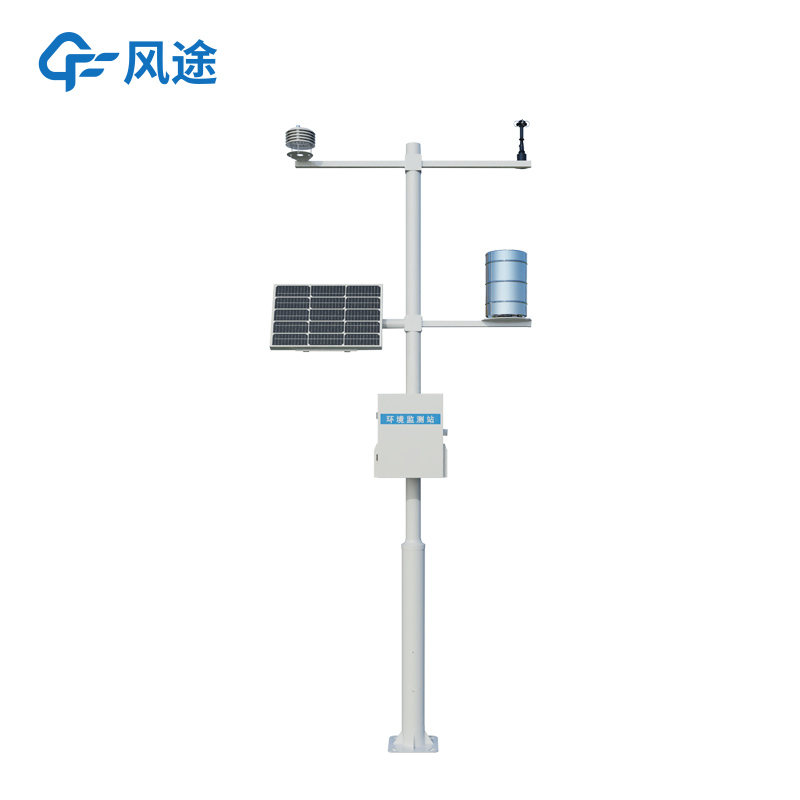Shandong Fengtu IOT Technology Co., Ltd
Sales Manager:Ms. Emily Wang
Cel,Whatsapp,Wechat:+86 15898932201
Email:info@fengtutec.com
Add:No. 155 Optoelectronic Industry Accelerator, Gaoxin District, Weifang, Shandong, China

Sales Manager:Ms. Emily Wang
Cel,Whatsapp,Wechat:+86 15898932201
Email:info@fengtutec.com
Add:No. 155 Optoelectronic Industry Accelerator, Gaoxin District, Weifang, Shandong, China
time:2025-10-13 09:35:05 source:Weather Station viewed:128 time
A mechanical weather station is a specialized device that integrates sensors, data acquisition modules, and communication units. It is designed to automatically collect, process, and transmit meteorological data.
Hardware Components
Multi-parameter Meteorological Sensors
These sensors directly measure environmental variables, including but not limited to:
Atmospheric temperature/humidity sensors
Barometric pressure sensors
Wind speed/wind direction sensors
Precipitation monitoring units (tipping-bucket rain gauges or optical rain gauges)
Radiation sensors (total radiation/ultraviolet/photosynthetically active radiation)
Three-needle probes for soil temperature and humidity
Main Control Unit
A microprocessor runs data quality control algorithms.
An analog-to-digital conversion circuit processes the original signals from sensors.
An embedded storage module enables local data caching.
Communication Interfaces
Supports 4G/5G/NB-IoT wireless transmission.
Provides local RS485/LoRaWAN interfaces.
Software System
The embedded system implements data preprocessing (unit conversion, timestamp marking, and outlier removal).
The communication protocol stack supports IoT protocols such as MQTT/CoAP.
Optional edge computing functions (e.g., temperature trend prediction, rainfall early warning threshold judgment).
Application Modes
Networked Observation
Deploy terminal clusters in specific areas, and realize spatiotemporal analysis of meteorological elements through a geographic information system (GIS) platform.
Vertical Monitoring
Construct a boundary layer meteorological profile by mounting brackets at different heights.
Mobile Deployment
After integrating a power supply system, it can be quickly deployed at emergency sites or temporary scientific research areas.
Technical Features
Operating temperature range: typically -40℃ to +70℃
Protection rating: IP66 or higher
Mean time between failures (MTBF): >8000 hours
Configurable data acquisition frequency (1 minute - 1 hour)
Transmission delay: <30 seconds (under 4G network conditions)
Such terminals have been widely used in professional fields such as irrigation decision-making for smart agriculture, wind flow modeling for wind farms, urban heat island effect research, and freezing early warning for highways. Their measurement accuracy must comply with the relevant observation standards of the World Meteorological Organization (WMO).

A mobile weather station is a movable meteorological observation device, distinguished by its high portability, simple operation, and ability to monitor multiple meteorological elements simultaneously. In terms of equipment structure, it has built-in high-precision sensors and intelligent chips. Rel...
Visibility is a key meteorological element, and it is used in meteorological observation work across multiple fields such as traffic operation, shipping scheduling, and low-altitude flight control. Accurately obtaining visibility data provides an important basis for various production operations and...
In maritime navigation, poor visibility is an "invisible killer" threatening ship safety. When weather conditions such as dense fog, heavy rain, or sand and dust occur, the visibility distance shortens sharply. Ships not only struggle to observe nearby landmarks, with positioning accuracy...
The Fengtu Visibility Sensor is a professional device used to measure atmospheric transparency, quantifying Meteorological Optical Range (MOR) to provide critical data for traffic safety and weather warning systems.Its mainstream working principle is "forward scattering". The sensor's...